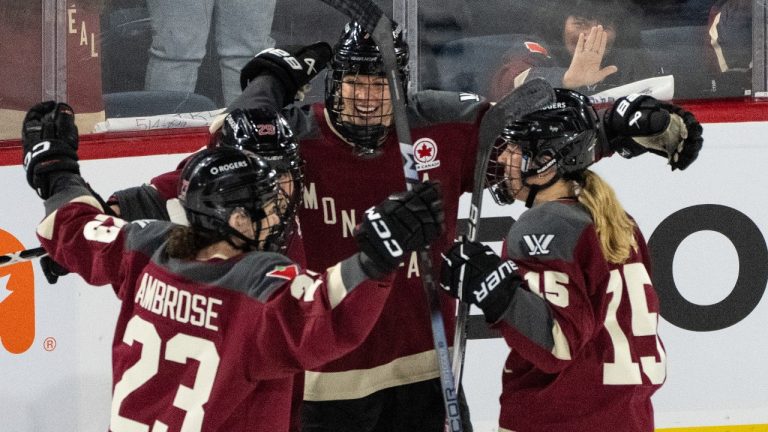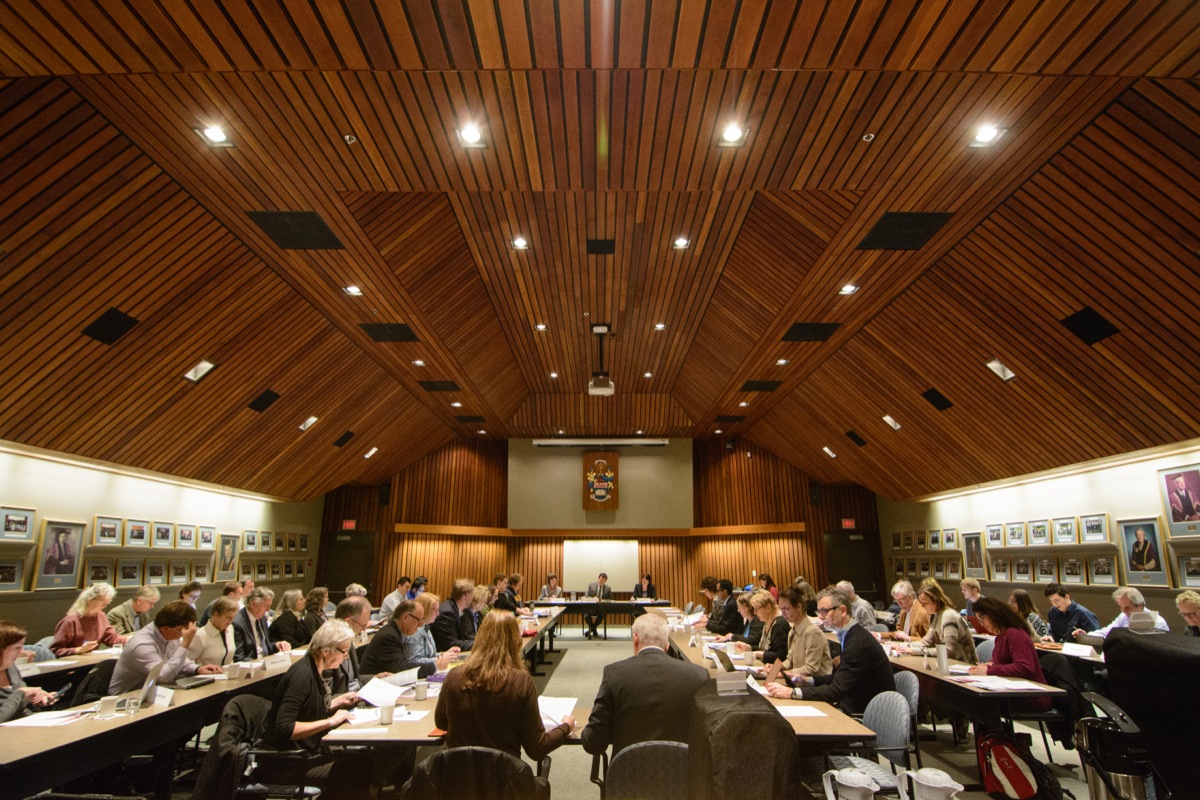With packed arenas, fierce competition, and game-changing innovation, the PWHL is taking women’s hockey to new heights

Photo via Sportsnet.
The seats are brimming in Laval’s 10 000-seat Place Bell. Children with signs and jerseys line the glass, hoping for a chance to meet their heroes — members of the Montreal Victoire and the Boston Fleet, two of the ‘Original Six’ teams in the newly-created Professional Women’s Hockey League (PWHL).
A buzzer goes off, signalling players to vacate the ice and make way for zambonis to complete their last sweeps. Meanwhile, the woman beside me crams a pair of silicone plugs in her ears. She catches my eye as I watch her incredulously and she smiles in my direction.
“Trust me,” she says. “In a minute, you’re going to wish you had these.”
As the zambonis come off and the lights dim, an eerie silence falls over the arena. And then, to the sounds of the announcer calling her name, Quebec-born goaltender Ann-Renée Desbiens steps onto the ice. The crowd goes ballistic. Chanting, screaming, dancing — one of the loudest displays of support I’ve ever witnessed in 23 years of belonging to the hockey fandom.
That is, until five seconds later, when Marie-Philip Poulin — three-time Olympic gold medalist, four-time World Champion, captain of the Canadian Women’s national hockey team since 2015, and arguably the second best woman to ever play the game — skates through the mist.
Created in 2023 and currently on its second season, the PWHL is the new gold standard for professional ice hockey. In the short time it’s been around, the popularity of the women’s game has skyrocketed. Before the PWHL, the record attendance for a women’s ice hockey game was 7 765. That number is now 21 105, with new ceilings being reached almost every month.
And this isn’t a case of support for support’s sake. There’s no shiny new toy syndrome or novelty act here. The PWHL is high-level, high-intensity, incredible-to-watch hockey. And it has an edge. For the first time ever at this level of women’s hockey, the PWHL has authorized hitting. Physicality has added a new dimension to the game, opening space for skilled players, while allowing defenders to assert themselves.
It’s significantly helped to silence the outdated notion that women’s hockey is somehow a lesser, watered-down version of the men’s game. This was not a change made purely for entertainment value either, as PWHL Senior Vice President Jayna Hefford explains.
“The players want this,” Hefford said in an interview with The Athletic. “The players are strong, they’re fast, they can play this way.”
It’s not just hitting rules that the PWHL has modified. The league has become the newest stomping ground for innovation, willing to rethink the way that hockey has traditionally been played.
One example of this is the implementation of new special teams rules. Last year, the PWHL created the “jailbreak” rule, which enabled teams to free their penalized player if they scored shorthanded. This year, the brand new “no escape rule” prohibits teams from making line changes after they commit a penalty, forcing their tired players to stay on the ice for the penalty kill. These changes prioritize offense, create excitement, and ultimately put forward a more engaging product.
And it’s working. In the second period of the Victoire-Fleet game, with the Victoire on the penalty kill, Ontario-born centre Kristin O’Neill burst through the defense to receive an off-the-glass pass from winger Claire Dalton. It was a play that would have never been executed in the men’s game, where the emphasis on the penalty kill is to dump the puck hard, and avoid risk.
O’Neill broke away and fired a quick wrist shot on net, which snuck through the five-hole of Fleet goaltender Emma Söderberg to put the Victoire up 2-1. The arena was literally shaking. Catherine Dubois, who had been serving the penalty, leapt out of the box — a full minute before she was supposed to — and mobbed her teammates. It was one of the coolest displays of sport I’ve ever witnessed.
Just over a year into its existence, the PWHL is already eyeing expansion. The original six teams — Toronto, Montreal, Ottawa, Boston, Minnesota, and New York — have built immediate, passionate fan bases. But the demand for more teams is undeniable. Cities across North America are eager to bring in franchises, and the league has already accepted bids from 20 potential new markets, with the goal of bringing in two new franchises next season.
On Jan. 8, Vancouver’s Rogers Centre welcomed the Montreal Victoire and Toronto Scepters for a game as part of the PWHL’s ongoing “Takeover Tour.” The game sold out in two days, and boasted an eventual attendance of 19 038. By comparison, the Canucks’ highest attendance this season was 18 940.
“When I was here in 2010, it was a sea of red and white,” Marie-Philip Poulin said after the game, referring to the 2010 Vancouver Olympics. “Now it’s seas of different jerseys across the PWHL… every day of the week. There’s potential to have sold-out crowds.”
For years, women’s hockey was stuck in a cycle of instability, with leagues starting and folding due to lack of support. But the PWHL is proving what happens when that cycle is broken — when players are paid fairly, games are marketed properly, and when the product is given the respect it deserves. The result? Packed arenas, record-breaking viewership, and a level of competition that’s impossible to ignore.
When women’s sports receive proper investment, they succeed. The WNBA has seen record growth in recent years. Women’s soccer continues to draw massive global audiences. The PWHL is just the latest example, and it won’t be the last.
“We’ve talked a long time about this moment, about women’s hockey, about the PWHL, and we’re here,” said Poulin in an interview with The Gazette. “We’re doing it for the next generation, but we’re all in this together because we truly believe in our product.”
As the final buzzer sounds in Laval, the crowd erupts once more. In a 3-1 Victoire win, Kristen O’Neill’s second period “jailbreak” tally stands as the game-winning goal. To me, it’s an apt metaphor. Women’s hockey has been caged for too long. Now the shackles are off. The wings are unfurled. They’ve taken flight.
Good luck catching them.








